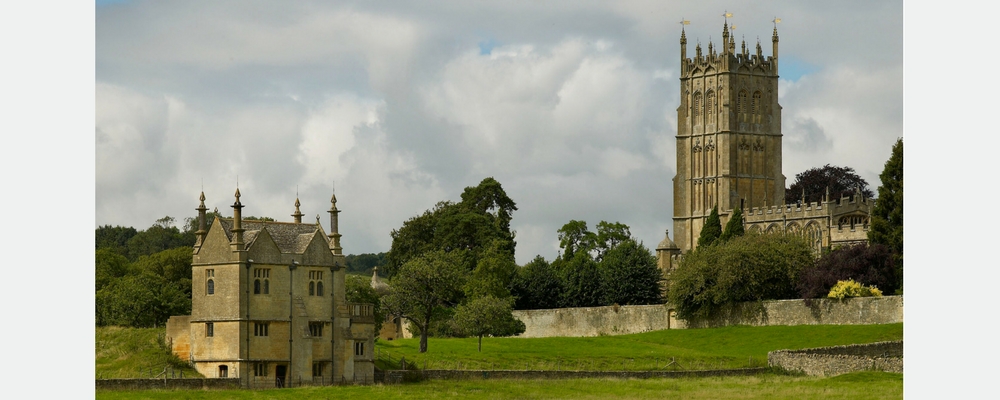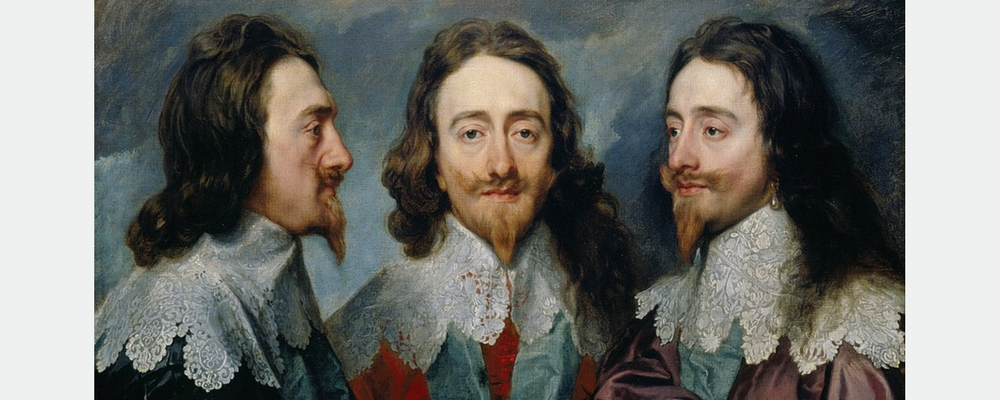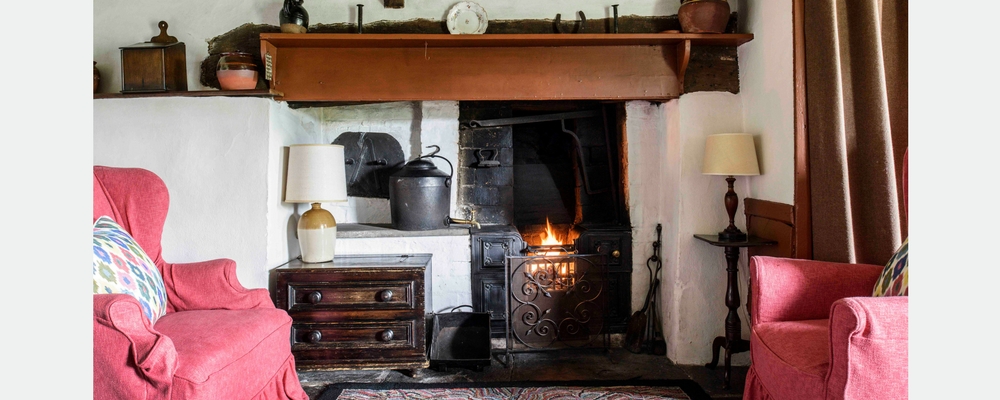One of the first Landmark Trust buildings I consciously saw was the haunting East Banqueting House in Chipping Campden, one misty Saturday morning. Visiting the church, it was clear something interesting lay on the other side of the wall, and when a friend gave me a leg up I saw it. Together with its sister building, it still stood, like an aged sentry still loyally guarding the site of Campden House itself, which burned almost to the ground almost four centuries ago.
 The East Banqueting House in Chipping Campden, with St. James' Church in the background
The East Banqueting House in Chipping Campden, with St. James' Church in the background
No decade in a millennium of English history could parallel the 1640s. Within only a few months the king was executed, the monarchy, the church of England and the House of Lords were all abolished. The sheer destruction is hard to overestimate. Some quarter of a million people died – at a time when the whole population of England was only 5 million. 10,000 houses were destroyed and hundreds of towns and villages were ravaged by conflict. Charles I’s magnificent collection of fine art – the subject of the unforgettable exhibition now on at the Royal Academy of Arts in London – was another casualty. Paintings and drawings by Holbein and Van Dyck, Rubens and Velasquez, Leonardo da Vinci and Michaelangelo, were broken up into lots and sold to the highest bidder in makeshift auction rooms at Somerset House on the Strand.
 Charles I in Three Positions by Sir Anthony Van Dyck, 1635-36 (Royal Collection)
Charles I in Three Positions by Sir Anthony Van Dyck, 1635-36 (Royal Collection)
And yet. To visit Chipping Campden now, and to contemplate the loveliness of the surviving banqueting houses and the undulating landscape, of which every contour contains a memory, is to be reminded that real beauty can result from destruction.
When the Great Seal of England was destroyed in 1649 a new one was cast, it was etched with the hopeful words: ‘In the First Year of Freedom’. During these years much of medieval England – ornate church interiors, inhabited castles and extensive hunting parks,– had been swept away. But in their place new national characteristics began to germinate: religious toleration, scientific endeavour, public participation in political debate, internationalism and a fierce antipathy to autocracy. While the English republic would fail, these instincts would take root.
Seventy miles due west of Chipping Campden lies lovely Maesyronnen Chapel. A single range contains both the magical little chapel itself and the house of its keeper, now a Landmark. Established in the 1690s, it is the oldest active non-Conformist church in Wales. The Toleration Act which made its creation possible, and granted freedom of worship to most English people, was one of the consequences of the great decade of destruction. To me Dickens’s words about the French revolution apply equally to 17th-century England, our own age of revolution: ‘It was the best of times, it was the worst of times’. And as is so often the case, buildings tell us the truth about the past.
 Maesyronnen Chapel near Hay-on-Wye
Maesyronnen Chapel near Hay-on-Wye